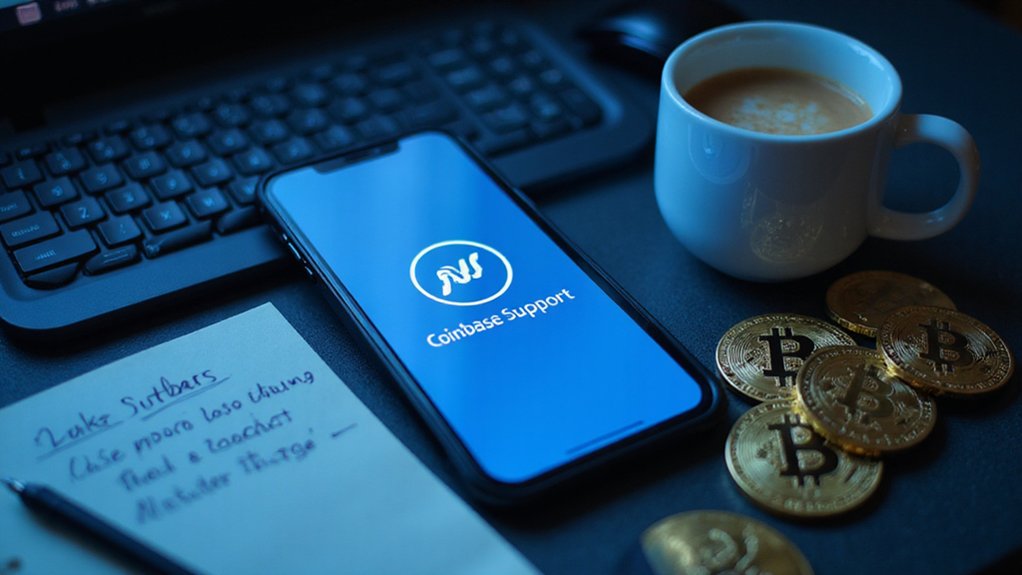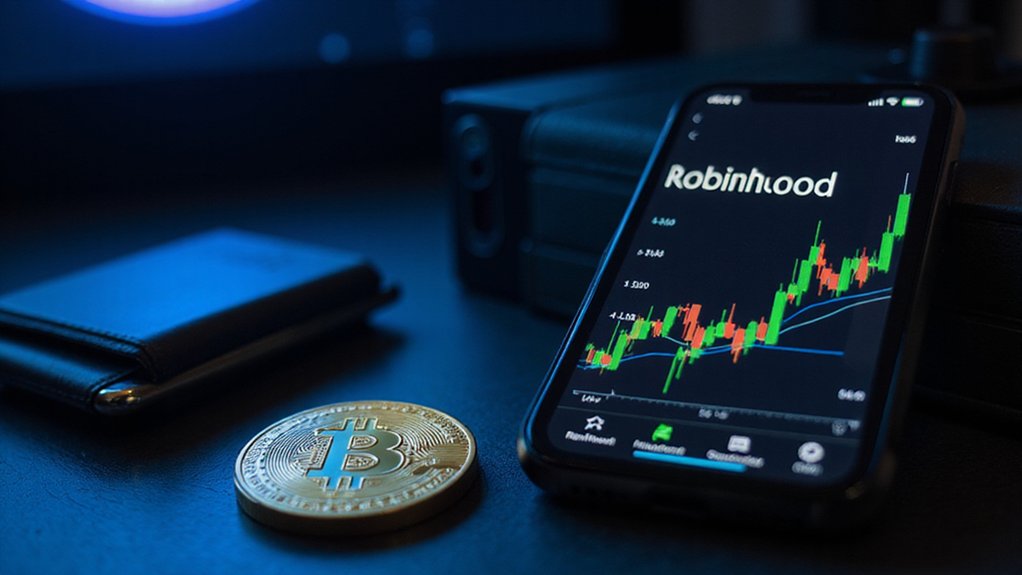Securing crypto airdrops requires strategic preparation across multiple fronts. Newcomers should establish non-custodial wallets with robust security measures, monitor aggregator sites like airdrops.io, and actively participate in project testnets. Holding threshold token balances, completing social tasks, and documenting interactions maximize qualification chances. Post-acquisition, consider converting portions to stablecoins during volatility spikes and tracking vesting schedules. The methodical participant who understands both infrastructure requirements and timing considerations stands to capture substantially more value from these digital windfalls.

Why chase speculative investments when, periodically, the cryptosphere simply delivers digital assets directly to one’s wallet?
The pursuit of speculative gain becomes unnecessary when the cryptosphere regularly deposits digital bounty into the prepared wallet.
Crypto airdrops—essentially free token distributions—have become the digital equivalent of finding unexpected currency in one’s coat pocket, albeit with considerably more preparation required.
The astute crypto participant recognizes that successful airdrop acquisition demands methodical planning rather than mere happenstance.
Establishing proper infrastructure begins with securing a non-custodial wallet compatible with multiple blockchains.
One must implement rigorous security protocols—address whitelisting, two-factor authentication, and hardware wallet integration for significant holdings.
The prudent practitioner maintains separate wallets for distinct campaigns, thereby compartmentalizing risk exposure while maximizing eligibility across ecosystems.
Discovery represents the second critical phase in this peculiar financial treasure hunt.
Monitoring aggregator websites (airdrops.io being particularly thorough), subscribing to project newsletters, and establishing presence in Discord communities of emerging Layer 1 and Layer 2 networks substantially increases one’s awareness of imminent distributions.
Google Alerts configured for relevant terminology provides supplementary intelligence with minimal effort expenditure.
Participation typically necessitates holding threshold balances of specific tokens, completing designated social engineering tasks (one hesitates to call retweeting “work,” yet here we are), and engaging with testnet environments.
Documentation of all interaction hashes proves essential for subsequent verification processes.
The market has, perhaps predictably, developed an entire ecosystem of strategies for task completion, including multi-device setups designed to circumvent farming detection mechanisms.
Post-acquisition strategies warrant equal consideration.
Converting portions to stablecoins during initial listing volatility, tracking vesting schedules, and participating in governance mechanisms all contribute to optimizing returns.
Additionally, the tax implications of these “gifts” cannot be overlooked—contrary to what crypto evangelists might suggest, tax authorities remain stubbornly interested in blockchain-based windfalls.
These free distributions come in various forms, including Standard and Bounty airdrops that have distinct qualification requirements for participation.
Securing your crypto assets with hardware security keys provides crucial protection against unauthorized access to your airdrop earnings.
Popular platforms like Coinbase and Binance frequently offer educational airdrops where users earn crypto by completing quizzes about specific cryptocurrencies.
Continuous optimization through ROI analysis, gas fee monitoring, and strategic claim timing represents the difference between casual participation and structured portfolio enhancement.
In a market defined by perpetual uncertainty, airdrops offer a rare certainty: properly executed, they deliver assets without corresponding capital deployment.
Frequently Asked Questions
Are Airdrops Considered Taxable Income?
Yes, airdrops are generally considered taxable income by the IRS when recipients gain control over the tokens.
The fair market value at the time of receipt must be reported as ordinary income on Form 1040 Schedule 1, regardless of whether one solicited these digital windfalls.
Notably, if the tokens cannot be transferred or sold immediately, taxation is deferred until control is established—a rare moment of tax code clarity in the otherwise murky waters of cryptocurrency regulation.
How Can I Spot and Avoid Airdrop Scams?
To spot airdrop scams, investors should exercise vigilance against several telltale red flags: requests for private keys (a cardinal sin in crypto security), demands for “verification fees” (an absurdity no legitimate project would require), promises of implausible returns, and communications from unverified sources.
Prudent participants cross-reference announcements with official channels, analyze token distribution patterns, and—perhaps most importantly—resist the manufactured urgency that scammers deploy to short-circuit rational decision-making processes.
Can I Receive Airdrops on Exchange Wallets?
Receiving airdrops on exchange wallets is technically possible, but fraught with limitations.
Exchanges often maintain discretionary policies regarding airdrops—some distribute them, others confiscate them entirely.
The risk-reward calculus rarely favors the exchange route; personal wallets (like Leap or Cryptomus) offer superior control and virtually guaranteed receipt.
Furthermore, exchanges frequently lack support for emergent tokens or impose transfer restrictions that negate the timely capitalization opportunities airdropped assets typically present.
Self-custody remains the prudent choice for serious airdrop hunters.
How Long Should I Hold Tokens After Receiving an Airdrop?
The ideal holding period for airdropped tokens defies one-size-fits-all prescriptions. Research indicates that 46% of top airdrops reached their zenith within a fortnight—a compelling statistic for those inclined toward quick profits.
However, thoughtful investors might conduct project-specific research before deciding.
While short-term speculative gains remain tempting (and occasionally substantial), a measured strategy balancing immediate liquidity against potential long-term value appreciation generally serves participants better than reflexive selling or indefinite holding.
What Happens if I Miss Claiming an Airdrop?
Missing an airdrop claim typically results in permanent forfeiture of those tokens—a financial equivalent of leaving money on the table (sometimes billions collectively).
The unclaimed assets may be burned or redistributed to other participants, with no recourse for latecomers.
While this eliminates immediate tax liabilities, it represents significant opportunity cost.
For users in restricted jurisdictions like the U.S., these misses contribute to broader economic exclusion from emerging blockchain ecosystems—a regulatory-induced wealth gap that continues to widen.









